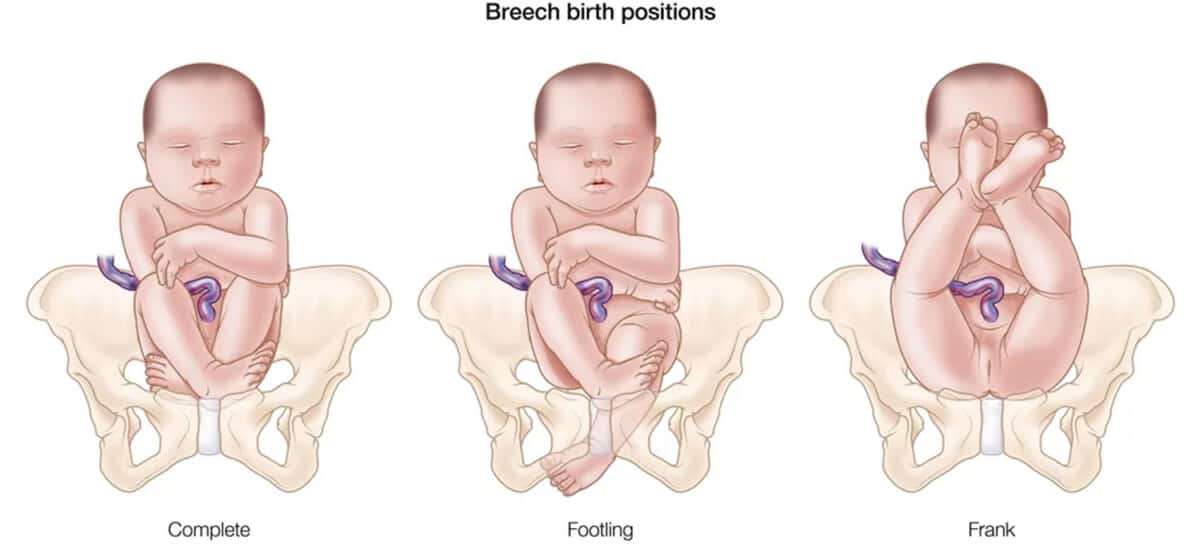When a woman is pregnant and their baby is most likely breech, firmly settled in the uterus in the “upside down” position, the delivery may mean a cesarian section instead of vaginal birth, with the potential of a longer, more complicated recovery for Mom. But what does a breech position mean for a Baby?
Alzein Pediatrics explains what breech means, what can happen to the Baby, and what can be done to alleviate any complications.
Research shows that 3 – 4% of full-term infants are born breech. Of those infants born breech, approximately 11% of those babies were born with at least one congenital abnormality (a defect that is present at birth) versus 5% of full-term infants who are born not breech.
A baby born breech means that the baby is positioned in the uterus with feet or butt down instead of head down during the final weeks of pregnancy. There are four different positions that the baby could be in if breech:
- Complete Breech: Baby’s buttocks are pointed towards the vagina with hips and knees flexed
- Frank Breech: Baby’s buttocks are pointed towards the vagina with legs pointed straight up, positioning the feet towards the baby’s head
- Footling Breech: Baby’s feet point downward, positioned to be delivered first
- Transverse Lie: Baby is lying horizontally across the womb instead of vertically
These positions make vaginal births difficult, but sometimes not impossible. The type of delivery you have will depend on the status of your and your baby’s health and safety. Often, a cesarian birth is safer. During vaginal delivery, a breech baby risks dislocated or broken bones in their arms or legs, flattening or twisting of the umbilical cord that may limit oxygen flow leading to nerve or brain damage, or other complications.
Hip Deformity or Dysplasia
Because of the limited movement allowed in the breech position, the hip joint may become partially or completely dislocated. Baby’s hip socket may not fully cover the ball portion of the upper thighbone. Alzein Pediatrics checks all babies for hip issues. If hip dysplasia is present, a soft brace may be used to correct it. If larger problems are diagnosed, the baby may be recommended to a specialist or to physical therapy.
Chromosomal Anomalies and Down Syndrome
Babies with abnormalities in their chromosome structure are likely to have low muscle tone, and so have difficulty or are unable to a vertical position before birth. After birth, occupational and physical therapy will help children strengthen their muscles and fine motor skills.
Breech Happens – And That’s OK
There is nothing you can do to prevent a breech baby and it’s most likely your baby will not encounter any issues after birth – just 11% of breech babies do.
If your breech baby does fall into that 11%, Alzein Pediatrics is here with resources and medical processes to support your child.
Whenever you are looking for developmental resources for your child – physical, mental, or behavioral, Alzein Pediatrics is here for you! Just click here to make an appointment.


